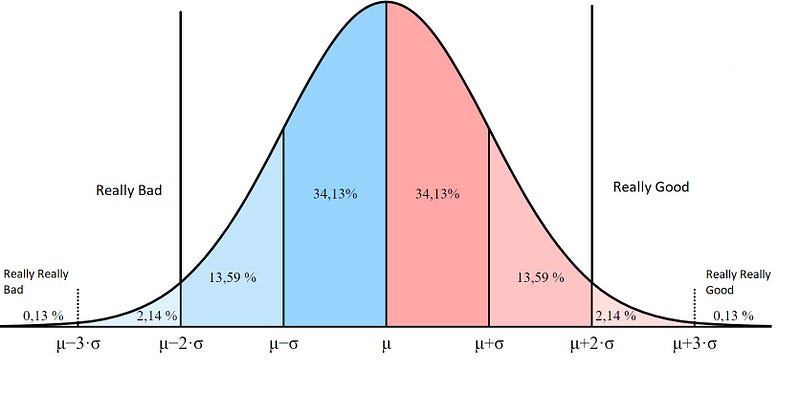Each of us engages in these negative habits every day, but it’s possible to overcome them

Photo by Radu Florin on Unsplash
Do you talk to yourself? Before you answer that, allow me to answer it for you. Yes, you do. You just don’t realize just how often you do it.
It’s not actual talking out loud to yourself. Rather, it’s an internal monologue — sometimes to yourself, other times about yourself. Sometimes it’s encouraging and helpful, but much more often, it’s not. The unhelpful internal monologue is called negative self-talk.
Negative self-talk plagues us all at times. It’s our tendency to think about ourselves, our choices, and our actions in critical and negative ways. It doesn’t have to be actual talk — as in words we say to ourselves.
Most of the time, it’s merely passing thoughts. And many of these thoughts are automatic; they happen without us even noticing at the time. But their effects build. We become stressed, anxious, pessimistic about the future, and we develop a negative perception of ourselves and our abilities.As a result, we limit ourselves. We keep ourselves from making progress.
But it doesn’t have to be this way. If you can identify the bad habits at the foundation of the negative self-talk, you can overcome them. When you do that, there’s much more room in your mind to just be relaxed — to be okay. With that comes the ability to do constructive things.
Bad Habit #1 : Filtering
Chances are, both negative and positive things happened to you today. But if you find yourself focusing more on the negative things, you’re filtering. You pick out the things that went wrong, and focus on them. Even if you’re focusing on them to motivate yourself to change, you can still be doing yourself harm.
The Remedy
For every thing in your day that went badly, there’s at least one thing that went well. In the course of a normal day, many things go right that you tend not to notice because you’ve assumed they’ll continue to go right. If you have friends and family, access to clean water, food, shelter, and a job — there are many things still going right for you. Remember those things.
We hear a lot about gratitude, but it only works if you practice it correctly. You have to be specific. Being thankful for your family, partner, or friends might lift your spirits once or twice, but they’re fairly abstract. You need to think of specific things that went right throughout the day, and be grateful that they did.
Having trouble thinking about things that went well? It’s easy to find them. Your electricity and water were working when you woke up. The cell phone towers are passing along your data and calls. Your coffee was hot, and that breakfast hit the spot. When you notice all these little things that go right each day, you can overturn the negative narratives that tend to come from filtering.
Bad Habit #2: Personalizing
Many of us tend to blame ourselves for things over which we had little or no control. We then obsess about what we could have done differently, or just beat ourselves up for the way things went. Either way, the effect is stress, anxiety, and a continued negative image of ourselves.
The Remedy
The truth is that most things are outside of our control. The things that are in our control are often less in our control than we think.
For instance, you cannot control how your partner will react to a difficult piece of news you deliver to them. But you can control how you deliver it. So rather than focusing on how they react, focus on your word choice and overall delivery. Be as calm and kind as you can, knowing that it is all you can really control.
Bad Habit # 3: Avalanching
Many of us suddenly become expert forecasters when things go wrong. We stub getting out of bed and we’re instantly certain that our entire day is going to terrible. A stub toe turns into the worst day ever. A tiny snowball turns into an avalanche — and your day gets buried under it.
This kind of self-talk proceeds from something small, like a stubbed toe, and says “this is just how this day is going to go, I know it. It’s all downhill from here.” But it was just your toe; nothing more.
Thinking like is self-sabotage. You expect bad things to happen, which basically makes sure you focus on all the bad things. Which conditions you to think that the day went badly. It’s a self-fulfilling prophecy.
The Remedy
The simplest way to beat this type of negative self-talk is to remember that you don’t have evidence that this day will be terrible. Remember that you’ve stubbed your toe before later in the day — when things were going well — and you didn’t even notice.
Remember that whatever you choose to focus on is what makes your day good or bad. There is no avalanche. There is no mounting doomsday scenario. The day is one of many, with ins and outs, ups and downs.
Take 3 deep belly breaths, and get on with your day — mindful that you’ll need to focus on more than just the little stubbed toes of your day.
Bad Habit #4: Black and White Thinking
There is a middle ground between being perfect at something and totally screwing up. In fact, most of the things that can happen fall into a middle ground of some sort. When we forget this, we’re left at the mercy of an emotional roller-coaster that we create. Things are either awesome or terrible — with all the stuff in between forgotten. But that’s a mentally exhausting way to live.
The Remedy
The middle ground is where things usually fall. You’re neither perfect nor a failure. Things are neither terrible tragedies nor amazing triumphs. Don’t believe me? What about a strong mathematical argument?
There’s a phenomenon in Mathematics called the normal distribution. Basically, it says that for most data sets, most of the points fall within a certain range in the middle of the extremes.

As you can see in the graph , over 68% of a given set are just to the right or left of the middle. Another 27+% are just to the right or left of those.
If the left side is “Really bad” and the right side is “really good”, then 95% of the stuff that happens falls somewhere in the middle between perfect and terrible. Only 5% of what happens is really either black or white — the rest is gray.
I’ve found it helpful to visualize this graph in moments when I find myself getting frustrated, angry, or impatient — especially with myself. I picture the curve above and ask where this event falls on it. Most of the time (about 95%, actually!), I start to calm down as I realize that it falls in that 95% range. See? We can finally use that math we learned in high school to do something really helpful in our everyday lives!